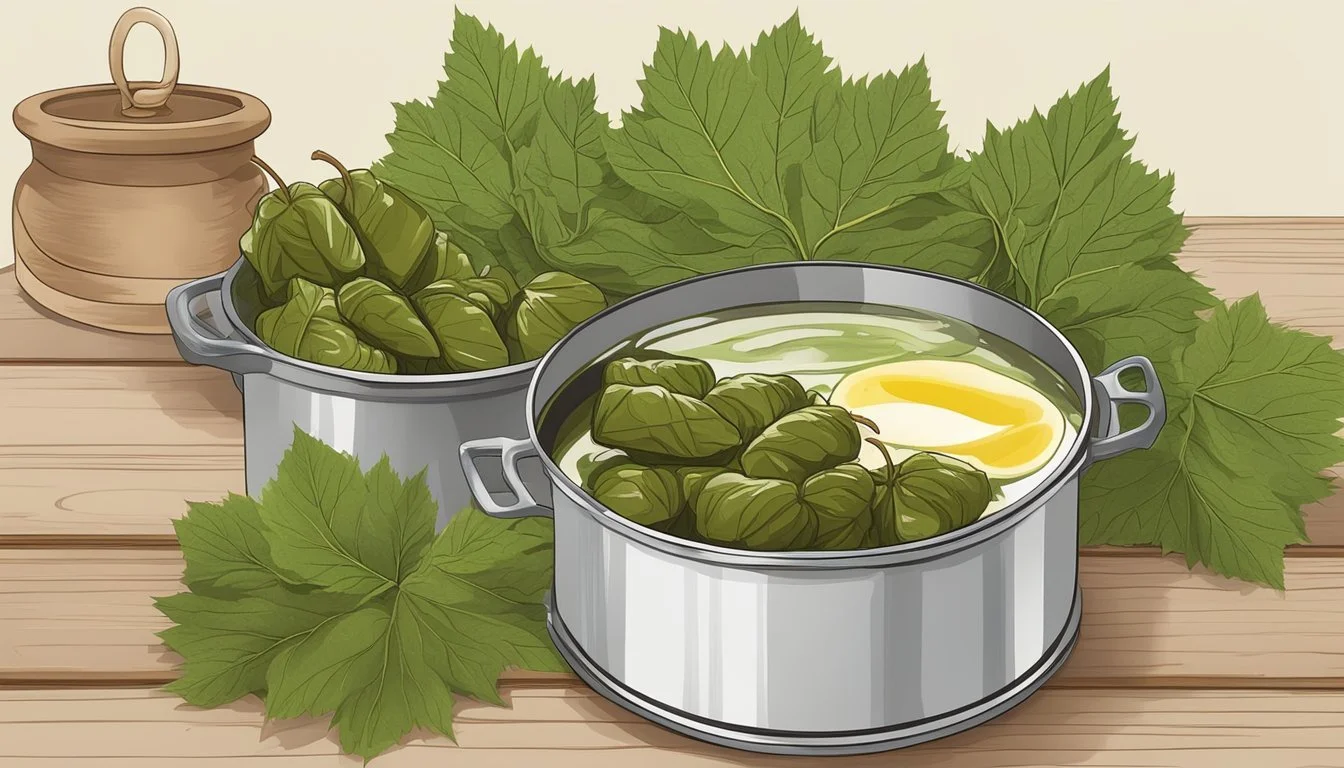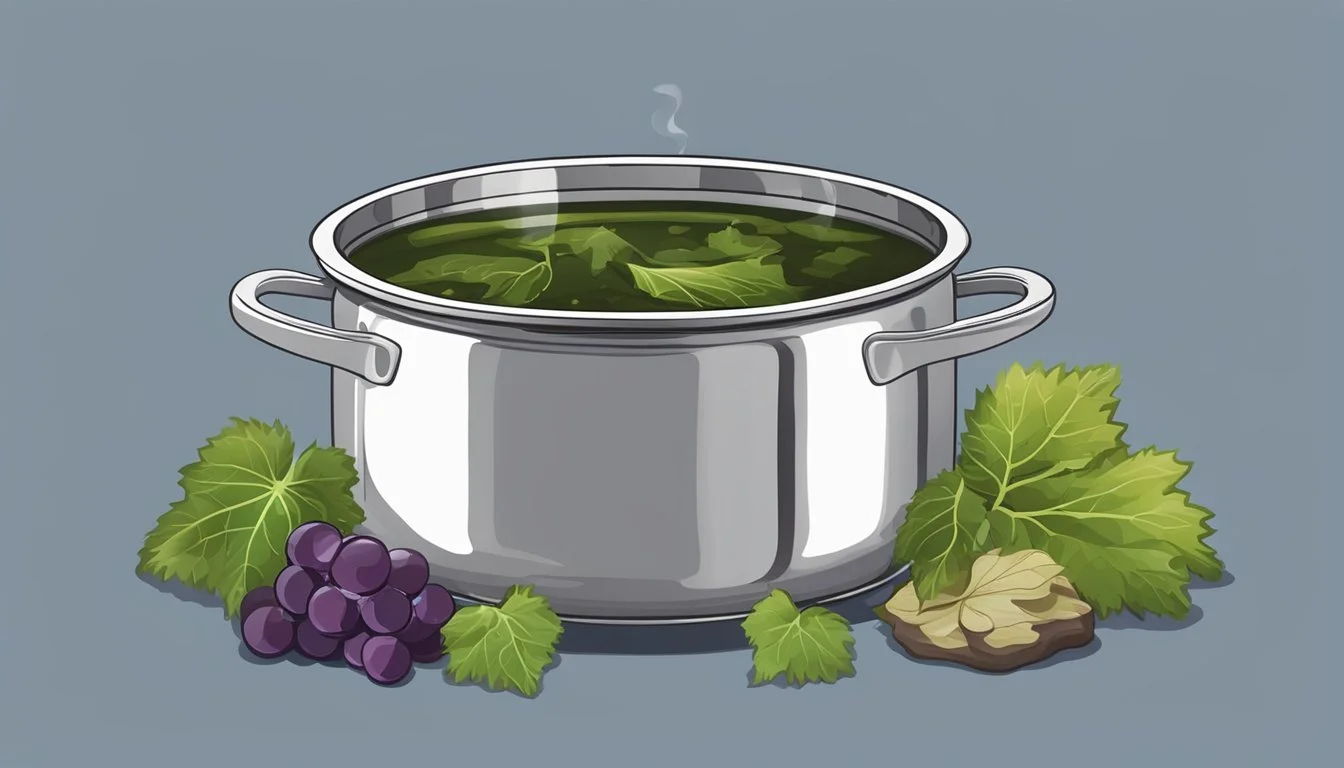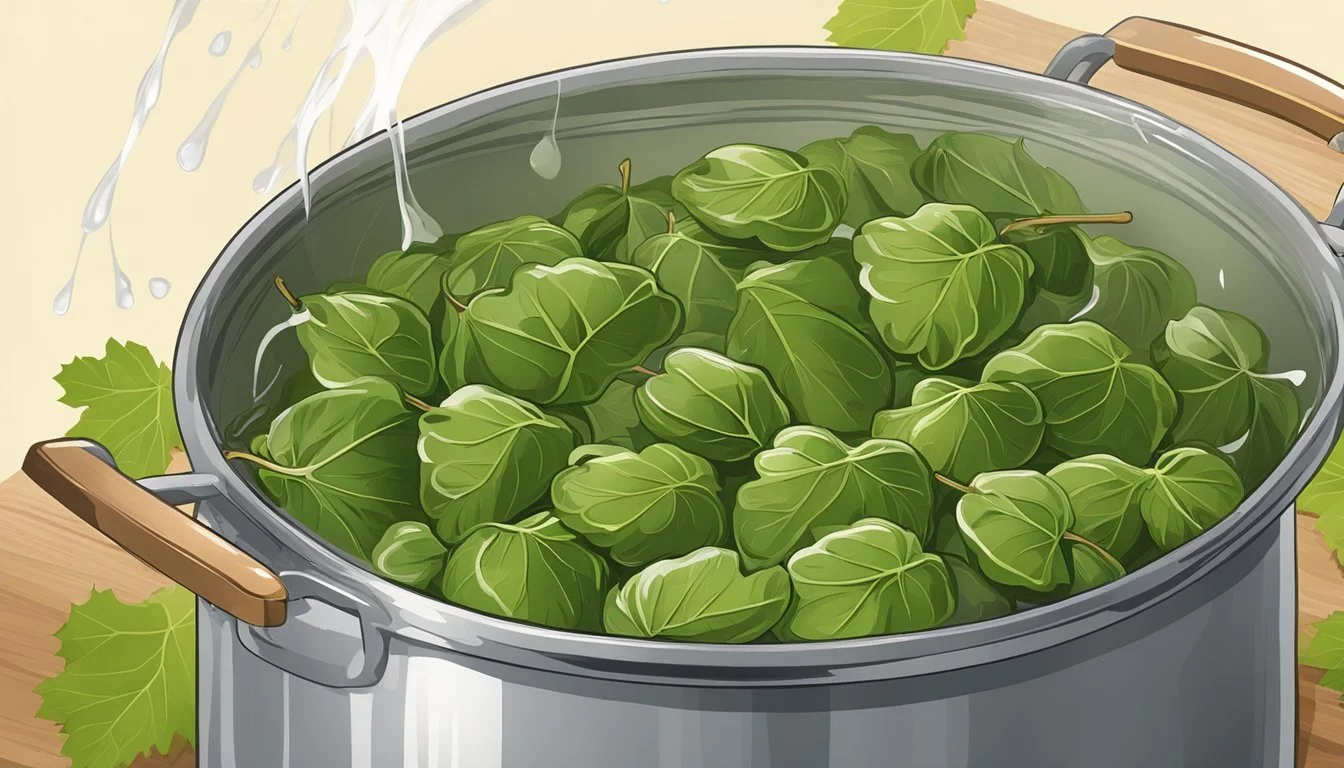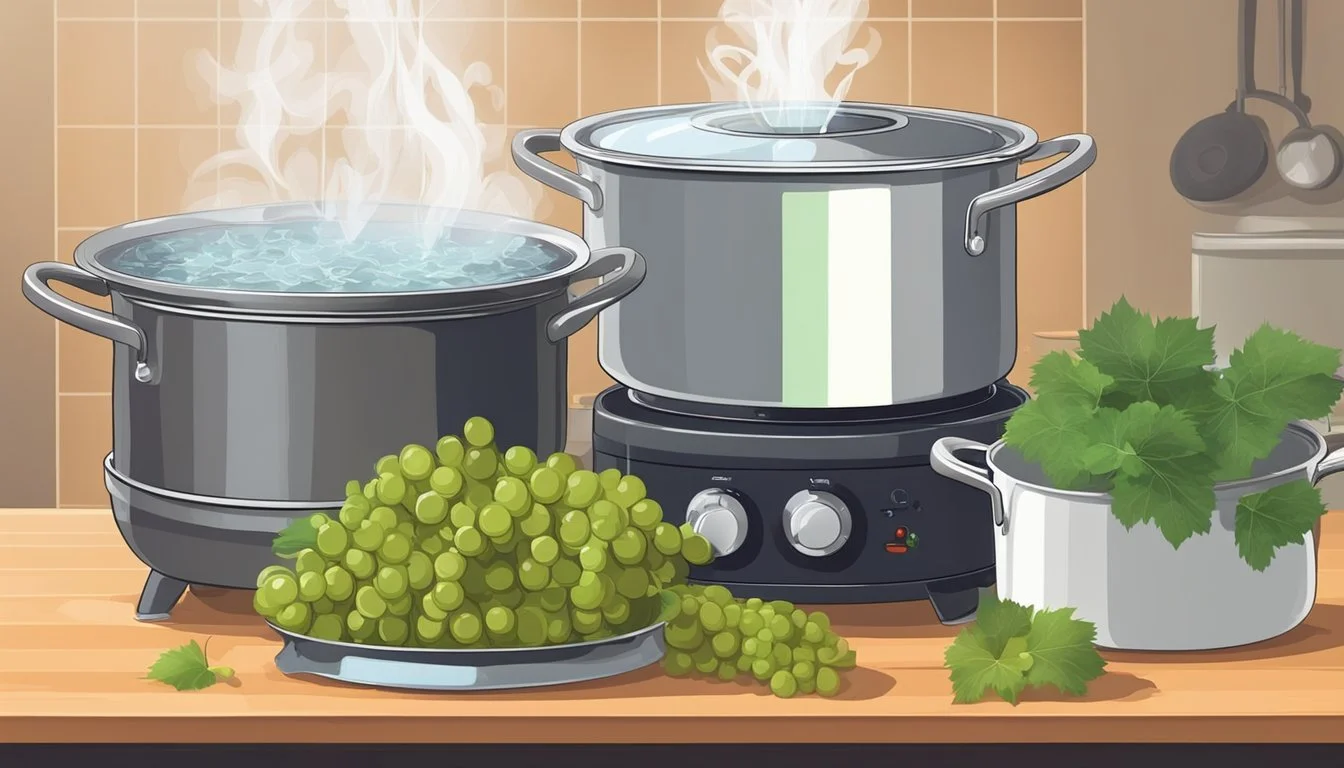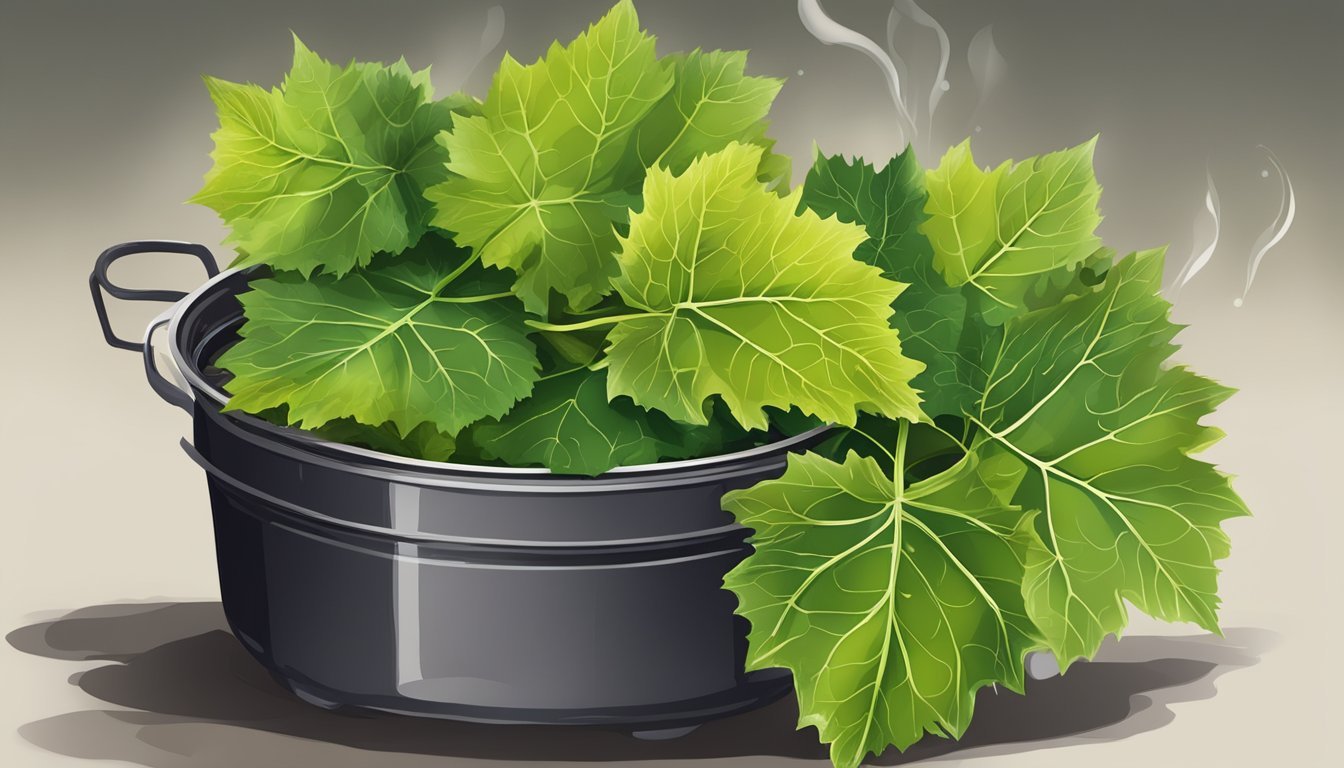Best Way to Reheat Dolma
Ensuring Tender Leaves and Moist Filling
Reheating dolma requires a delicate balance to maintain the integrity of both the grape leaves and the filling. Dolma, a traditional Mediterranean dish, consists of grape leaves stuffed with a savory filling that often includes rice, meats, and various herbs and spices. Preserving the tenderness of the grape leaves while keeping the filling moist can be challenging, but with the right methods, dolma can be restored to its freshly-made flavor and texture.
The key to successfully reheating dolma lies in gentle heat and proper moisture control. Whether using a microwave, oven, or stovetop, the process must be carefully managed. The microwave offers a quick option by arranging the dolma on a microwave-safe dish, slightly moistening them, and heating on high for a couple of minutes. For those who prefer the oven, preheating it to a moderate temperature and covering the dolma with foil can yield optimal results. Each technique has its own set of nuances to ensure the grape leaves do not dry out and the filling warms through evenly.
Understanding Dolma
Dolma is a culinary treat wrapped in grape leaves, encompassing a spectrum of fillings from rice and herbs to meat, rooted in history and adapted across cultures.
History and Cultural Significance
Dolma, a term derived from the Turkish verb dolmak, meaning 'to be stuffed', has a storied past that traces back to the Ottoman Empire. The diversity of dolma recipes reflects the extensive reach of the empire, which spanned across regions that today comprise over 40 countries, including Greece and Armenia. Through centuries, dolmades (the Greek term) became an emblematic element of Mediterranean food, while the variation known as sarma is closely associated with the cuisines of the Middle East.
The dish's significance goes beyond mere sustenance to represent a fusion of cultures and traditions. In Greece, Greek dolma is a staple in festive tables and a symbol of family gatherings, whereas in Armenia, it serves as a comfort food that ties back to the country's heritage.
Varieties of Dolma
Variants of dolma are as diverse as the regions they hail from. Though typically vegetarian, incorporating rice, pine nuts, and a medley of aromatic herbs, meat-filled dolmas are also prevalent. In Greece, the quintessential Greek dolma usually involves vine leaves stuffed with a mixture of rice and herbs, often served with a side of lemon or yogurt.
In Armenia, dolma takes on variations that include a range of leafy wraps like cabbage, and the fillings often feature a mix of grains, meats, and spices, authentically capturing the region's palate. The common denominator across all types of dolma is the attention to preserving the tenderness of the leaves and the moisture within the filling, key factors to the enjoyment of this versatile dish.
Ingredients Overview
In the preparation of dolma, both the grape leaves and the filling ingredients are crucial for creating a flavorful dish that maintains its texture upon reheating.
Types of Grape Leaves
Grape leaves can be fresh or preserved, with the latter being more commonly available in jars or cans. For optimal tenderness:
Fresh grape leaves: Should be blanched before use to soften them.
Jarred or canned grape leaves: Need to be rinsed to remove excess brine and can be used directly.
Filling Components
The filling for dolma is versatile but typically includes a combination of:
Rice: Acts as the base; should be rinsed to reduce stickiness.
Herbs: Fresh dill, parsley, or mint, finely chopped, add freshness.
Meat (optional): Often ground beef or lamb, cooked until no longer pink.
Olive oil: Provides flavor and moisture to the rice and meat filling.
Lemon juice: Adds a bright, citrus note to balance the flavors.
Pine nuts and currants (optional): Add texture and a subtle sweetness.
Onion: Finely diced, contributes a savory depth.
Spices: Salt, pepper, and sometimes cinnamon or allspice, enhance the overall taste.
The choice and proportion of ingredients can vary, but they should always complement each other to create a harmonious filling that remains moist when reheated.
Preparation for Reheating
When reheating dolma, the objective is to maintain the tenderness of the grape leaves and the moisture of the filling. Proper preparation is crucial for achieving the best results.
Handling Grape Leaves
If using fresh grape leaves, ensure they are rinsed and patted dry before reheating. For jarred grape leaves, they should be gently removed from the brine and excess liquid should be drained. If the leaves feel too brittle or stiff, one can soften them by briefly blanching in hot water. When handling grape leaves, whether fresh or from a jar, it's important to be delicate to avoid tearing.
Preparing the Filling
If the dolma has a meat filling, ensure it's spread evenly to allow for uniform reheating. For rice fillings, check for any hard spots that could indicate drying out. Drizzle with olive oil or a lemony broth to both enhance flavor and add moisture. Addition of fresh herbs can revitalize the flavor profile. When using grape leaves in brine, rinsing them can reduce the saltiness if desired, though the brine can also help in keeping the rice moist during reheating.
Reheating Methods
To ensure dolma are reheated properly, it's imperative to choose a method that not only warms them thoroughly but also maintains their tenderness and moisture. Here are three effective reheating techniques to consider.
Stovetop Technique
One can reheat dolma on the stovetop using a pot with a tight-fitting lid to trap steam. They should place the dolma in the pot, add a splash of water or vegetable broth to add moisture, and cover the pot. Heat on a low setting, which allows the dolma to warm up without the grape leaves drying out, preserving their tenderness.
Oven-Based Approach
For those who prefer an oven-based method, individuals should preheat their oven to 350°F (175°C). They'll line a baking sheet with parchment paper, place dolma in a single layer, and potentially add a drizzle of olive oil to maintain moisture. This method heats the dolma evenly and can gently crisp the grape leaves.
Microwave Method
The microwave provides a quick reheating option for dolma. Individuals should arrange the dolma in a microwave-safe dish, cover with a wet paper towel to ensure the filling stays moist, and heat in short intervals. This method is best for those who are short on time and wish to avoid drying out the dolma.
Maintaining Quality and Taste
When reheating dolma, one must carefully balance moisture retention with flavor preservation to ensure the grape leaves remain tender and the filling stays moist. This section will provide specific techniques to achieve this, using olive oil, lemon juice, water, and select herbs.
Moisture Retention
To avoid dryness, the dolma should be lightly sprinkled with water before reheating. For those using a microwave, this can be achieved by covering the dolmades with a damp paper towel. When using a stovetop, a few tablespoons of olive oil or vegetable broth can help maintain the moisture. Reheating should be done gently to make sure the grape leaves do not become tough.
Microwave Method:
Cover the plate of dolmades with a damp paper towel.
Heat on high for 1-2 minutes, adjusting as necessary.
Stovetop Method:
Add olive oil or vegetable broth to the pan.
Cook on medium heat, covered, for 5-7 minutes.
Flavor Preservation
The dolma's filling is often a mixture of rice, herbs, and sometimes meat, seasoned with pepper, allspice, dill, and mint. To preserve these intricate flavors, gentle reheating is crucial. Adding a splash of lemon juice can help to revitalize the flavors post-reheating. For oven or stovetop methods, using low to medium heat allows for the flavors to be gently warmed without burning any particular ingredient.
Oven/Stovetop Tips:
Season with additional herbs or a sprinkle of allspice or pepper after reheating.
Drizzle with lemon juice to enhance flavor.
Serving and Presentation
When serving dolma, the focus should be on maintaining the tenderness of the grape leaves and the moisture of the filling. Presentation can enhance the dining experience, whether it is served as an appetizer or as part of a main course meal.
Plating Dolma
For plating dolma, one should arrange them neatly on a platter, showcasing their uniform size and the glossy texture of the grape leaves. If serving as an appetizer, place them in a circular pattern leaving space in the center for a dip or garnish. As a main course, dolma can be elegantly positioned in a straight line down the middle of the plate, with side dishes arranged around it for visual appeal.
Accompaniments and Side Dishes
Dolma pairs well with a variety of side dishes and accompaniments. To complement the dish, consider these suggestions:
Tzatziki: A Greek yogurt-based dip with cucumber and garlic, ideal for adding a creamy texture to each bite.
Greek Salad: A refreshing side that can balance the richness of the stuffed grape leaves.
Avgolemono Sauce: A lemony egg sauce that can be drizzled over the dolma to enhance its flavor.
Flatbread: Serve alongside to scoop up any extra filling or sauces.
Dips: Include a small bowl of olive oil or a flavored dip to add another dimension to the dish.
Whether served for lunch or dinner, dolma should be presented in a way that entices the diner with its traditional appearance and accompanies it with flavors that resonate with the origins of the dish.
Storage and Leftovers
Proper storage of leftovers is crucial to maintain the quality and safety of dolma. This section will guide the reader through effective refrigeration practices and reheating methods to ensure the grape leaves remain tender and the filling stays moist.
Refrigeration Best Practices
When storing leftover dolma, it's essential to keep them in an airtight container to preserve their freshness. One should refrigerate the dolma within two hours of cooking to prevent bacterial growth. The ideal temperature for refrigeration is at or below 40°F (4°C). Store dolma in the refrigerator for up to three to five days to maintain optimal taste and texture.
Reheating Leftover Dolma
Reheating dolma requires gentle heating to prevent the grape leaves from becoming tough and the filling from drying out. Follow these steps:
Remove the dolma from the refrigerator and allow them to come to room temperature for about 15 minutes before reheating. This step ensures even reheating.
For microwave reheating, place the desired number of dolma on a microwave-safe plate, and lightly sprinkle water or cover with a damp paper towel. Heat on high for 1-2 minutes per dolma, keeping in mind that microwave wattages vary.
For oven reheating, preheat the oven to 350°F (175°C), place the dolma in an oven-safe dish, cover with aluminum foil to trap moisture, and heat for about 10-15 minutes.
Using these methods, one can reheat leftover dolma effectively, preserving their tenderness and moisture.
Health and Nutritional Information
Dolma, a delightful dish consisting of grape leaves stuffed with an array of ingredients, provides both taste and nutrition. Here, the focus is on the caloric content and dietary benefits of this dish which can vary based on the specific recipe and portion size.
Caloric Content
The caloric content of dolma can differ, but a typical serving size with a filling of basmati rice, extra virgin olive oil, and ground meat may contain approximately 150-200 calories. If dolma is prepared in a vegetarian style, the absence of ground meat can reduce the calories per serving. The content can also depend on the size of the dolma and the amount of filling used.
Dietary Benefits
Dolma is rich in various nutrients that contribute to a balanced diet. Here are the key components:
Extra Virgin Olive Oil: A source of monounsaturated fats, which are known to be heart-healthy.
Basmati Rice: Offers carbohydrates for energy, and when unrefined, it provides fiber.
Ground Meat: For non-vegetarian recipes, it adds protein that is essential for muscle repair and growth.
Vegetarian Fillings: Such as chickpeas or lentils, that offer protein and fiber, making them a suitable option for those on a vegetarian diet.
Additionally, grape leaves are low in calories but high in fiber, vitamin A, vitamin K, and antioxidants. For individuals following a healthy and balanced diet, dolma can be a flavorful yet nutritious part of a meal.
Shopping Guide
When preparing to reheat dolma, the shopper's focus should be on purchasing quality ingredients for the best taste and texture. Proper selection and sourcing of these ingredients are essential for preserving the tender grape leaves and ensuring the filling remains moist.
Selecting Quality Ingredients
Grape Leaves: Seek out grape leaves that are preserved in brine, looking for a vibrant green color without any tears or discoloration. They should be pliable and not too thick, as thinner leaves yield a more tender result after reheating.
Rice: Opt for short-grain rice, which is traditionally used for dolma because of its stickiness and ability to absorb flavors well.
Olive Oil: A high-quality extra virgin olive oil will provide a rich flavor and help keep the filling moist.
Spices: Fresh and authentically sourced spices, such as dill, mint, and black pepper, are crucial for an aromatic and flavorful filling.
Where to Buy Grape Leaves
Local Mediterranean or Middle Eastern Markets: These specialty shops often have a selection of grape leaves and are a good source for fresh spices.
Supermarkets: Larger chains may carry grape leaves in the international foods aisle.
Amazon: This online marketplace offers convenience by providing a wide selection of grape leaves and ingredients that can be delivered directly to your door.
Health Food Stores: Stores that focus on natural and organic products sometimes stock jarred grape leaves that are free from unwanted additives.
To ensure the best result when reheating your dolma, attention to the quality and source of grape leaves and other key ingredients is indispensable.
Dolma Recipes and Variations
Dolma, a renowned Mediterranean recipe, is a culinary tradition shared by many cultures. The term itself refers to stuffed vegetable dishes, and in the context of grape leaves, they are often called dolmades in Greek cuisine.
Basic Ingredients of Dolma:
Grape Leaves: Jarred or freshly blanched
Rice: Typically short-grain, rinsed well
Herbs: Such as dill, parsley, and mint
Nuts: Pine nuts or almonds for texture (optional)
Seasonings: Lemon juice, olive oil, salt, and pepper
Cooking Methods:
Stovetop: Simmering in a pot with broth or water
Oven-baked: For a variation that offers a crispier texture
When preparing dolma filling, chefs often combine rice with aromatic herbs and seasonings. They might incorporate minced meat or keep it vegetarian with a mix of nuts and raisins. The key to a successful dolma recipe lies in not overstuffing the leaves, as the rice will expand during cooking.
Mediterranean Variations:
Greek Dolmades: Often prepared with a lemony mix and served with a side of tzatziki.
Turkish Dolma: Includes a heartier filling with ground beef and mint.
Lebanese Dolma: They might add pomegranate molasses for a sweet and sour note.
Each region adds its twist, from the spices used to the accompaniments served, reflecting the diverse palette of Mediterranean cuisine. Chefs are confident in experimenting with various ingredients to cater to dietary preferences while maintaining the dish's essence.
To summarize dolma recipes and variations:
Begin with the staples: grape leaves and a rice base.
Enhance with regional spices, herbs, and additional fillings like meat or nuts.
Cook with precision on the stovetop or oven to preserve tenderness and flavor.
Serve with appropriate accompaniments that complement the dolma's taste profile.

